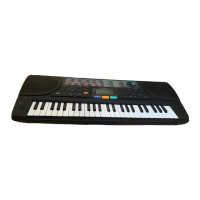Why is there no sound from computer MIDI data on Radio Shack MD-1800 Electronic Keyboard?
- KKara EverettSep 12, 2025
If no sound is produced when playing MIDI data from a computer on your Radio Shack Electronic Keyboard, first, ensure that the MIDI cables are connected properly. If they are, check that the channel is not turned off, or the volume setting is not too low. Use the Mixer to turn the channel on or raise the volume setting.


